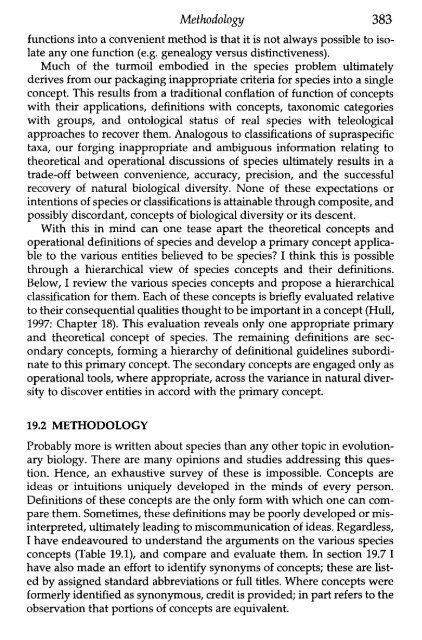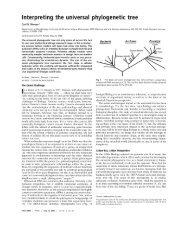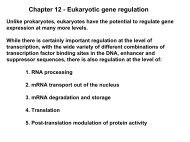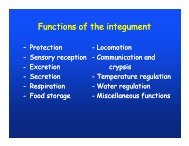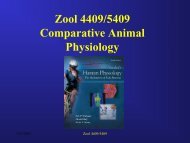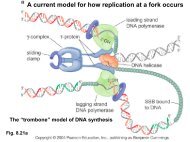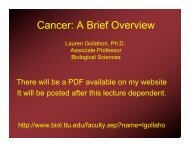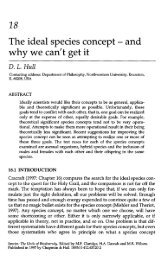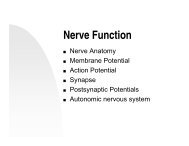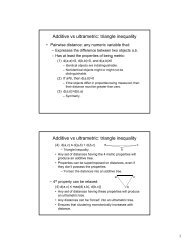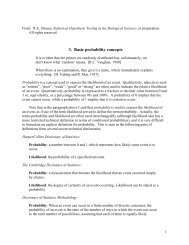Mayden, 1997 - Texas Tech University
Mayden, 1997 - Texas Tech University
Mayden, 1997 - Texas Tech University
Create successful ePaper yourself
Turn your PDF publications into a flip-book with our unique Google optimized e-Paper software.
Methodology 383functions into a convenient method is that it is not always possible to isolateanyone function (e.g. genealogy versus distinctiveness).Much of the turmoil embodied in the species problem ultimatelyderives from our packaging inappropriate criteria for species into a singleconcept. This results from a traditional conflation of function of conceptswith their applications, definitions with concepts, taxonomic categorieswith groups, and ontological status of real species with teleologicalapproaches to recover them. Analogous to classifications of supraspecifictaxa, our forging inappropriate and ambiguous information relating totheoretical and operational discussions of species ultimately results in atrade-off between convenience, accuracy, precision, and the successfulrecovery of natural biological diversity. None of these expectations orintentions of species or classifications is attainable through composite, andpossibly discordant, concepts of biological diversity or its descent.With this in mind can one tease apart the theoretical concepts andoperational definitions of species and develop a primary concept applicableto the various entities believed to be species? I think this is possiblethrough a hierarchical view of species concepts and their definitions.Below, I review the various species concepts and propose a hierarchicalclassification for them. Each of these concepts is briefly evaluated relativeto their consequential qualities thought to be important in a concept (Hull,<strong>1997</strong>: Chapter 18). This evaluation reveals only one appropriate primaryand theoretical concept of species. The remaining definitions are secondaryconcepts, forming a hierarchy of definitional guidelines subordinateto this primary concept. The secondary concepts are engaged only asoperational tools, where appropriate, across the variance in natural diversityto discover entities in accord with the primary concept.19.2 METHODOLOGYProbably more is written about species than any other topic in evolutionarybiology. There are many opinions and studies addressing this question.Hence, an exhaustive survey of these is impossible. Concepts areideas or intuitions uniquely developed in the minds of every person.Definitions of these concepts are the only form with which one can comparethem. Sometimes, these definitions may be poorly developed or misinterpreted,ultimately leading to miscommunication of ideas. Regardless,I have endeavoured to understand the arguments on the various speciesconcepts (Table 19.1), and compare and evaluate them. In section 19.7 Ihave also made an effort to identify synonyms of concepts; these are listedby assigned standard abbreviations or full titles. Where concepts wereformerly identified as synonymous, credit is provided; in part refers to theobservation that portions of concepts are equivalent.


